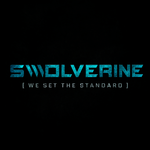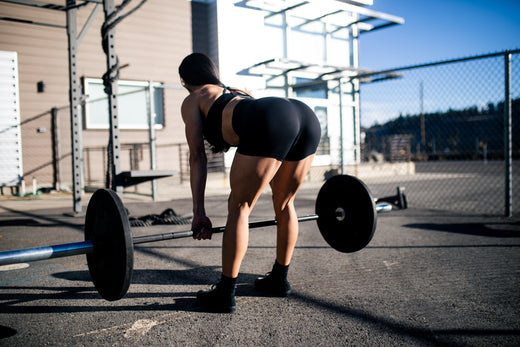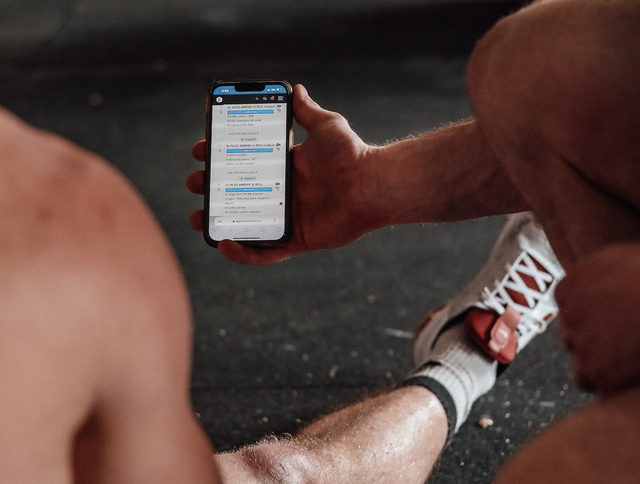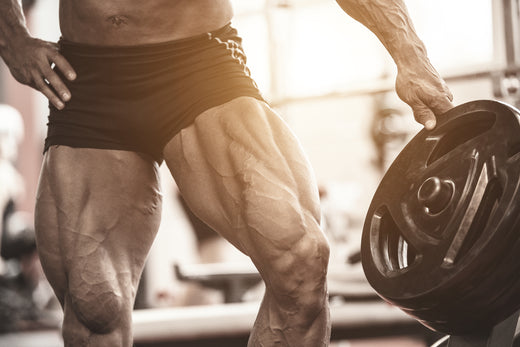If you think squats and deadlifts are good enough to grow your glutes, then think again. Growing that backside is way harder than you think and you’re going to need some specific glute exercises for mass. Maybe you’ll need an added leg day to your training split to build that butt. We’re going to talk about the best glute-growing exercises you’ll need to build a strong solid booty.
Glute Anatomy
If you didn’t already know, your glutes are the biggest muscles in your body. Your glutes have three specific muscles

The Gluteus Maximus—the biggest muscle in the booty (grab it)
The Gluteus Medius—the second biggest muscle that wraps around the hips (more on the side)
The Gluteus Minimus—the smallest muscle in the butt that sits under the medius
To build your glutes, it’s crucial that you activate your glutes. You can squat and deadlift all you want, but if you’re not activating your muscles, you’ll never add more muscle mass.
RELATED ARTICLE How To Grow A Bigger Butt In 30 Days
Glute Activation
Glute activation refers to activating, or “firing up” the glute muscles. The activation is to promote glute hypertrophy to build more muscle and strength.
Often times when you have improper form and minimal extension and flexion through squat and leg movement exercises, you don’t actively engage or contract your glute muscles. Without activation, you’ll never be able to build a bigger butt.
The problem is that when you squat and deadlift, your body forgets to use your glutes, and overcompensates using other muscles. Your lower back, hamstrings, and quads often take on the extra load resulting in lower back pain and hip pain, creating muscular imbalances. If your glutes aren’t firing properly then you can become “quad-dominant", resulting in massive quad muscles, with little to no butt.
Best Glute Exercises
1. Deadlift
Deadlifts have many known full-body benefits and are extremely crucial in the development of total-body strength, proper hip function, core strength, and spine stabilization (which can reduce the risk of lower back injuries). Since deadlifts recruit multiple muscle groups, joints, and stabilizing muscles, they also burn more calories and more body fat as compared to other exercise movements. With the proper form, the deadlift can add a ton of performance and health benefits, to your training program, in addition to growing your glutes.
How To Deadlift
- Stand with feet hip- to shoulder-width apart. Rest your shins against the bar.
- Hinge at the hips and sink back into your glutes while keeping your spine extended and chest lifted up toward the ceiling.
- Grip the bar with one hand facing palm-up and the other hand facing palm-down. This over-under grip is for safety and can keep the bar from rolling out of your hands.
- Squeeze the bar with your hands as you sink back into your hips. As you sink into your hips, think about pulling your back and down to engage the lats. This will help keep your low-back stable.
- For the pull:
- Push your feet into the floor to straighten your legs and lift your chest as you lift the weight off the floor. As you stand up, think about pulling back on your knees and pushing your hips forward.
- Finally, for the lockout:
- At the top of the movement, hold your shoulders back as you keep your spine straight and tall. Pause for a moment before descending into the lowering phase.
- Slowly push your hips back while keeping your spine long and chest lifted into the air.
- Use your thigh muscles to resist the downward pull of gravity as the weight lowers back to the floor.
- At the bottom, pause, reset your hips and repeat for the desired number of repetitions.
- Push your feet into the floor to straighten your legs and lift your chest as you lift the weight off the floor. As you stand up, think about pulling back on your knees and pushing your hips forward.
- At the top of the movement, hold your shoulders back as you keep your spine straight and tall. Pause for a moment before descending into the lowering phase.
- Slowly push your hips back while keeping your spine long and chest lifted into the air.
- Use your thigh muscles to resist the downward pull of gravity as the weight lowers back to the floor.
- At the bottom, pause, reset your hips and repeat for the desired number of repetitions.
RELATED ARTICLE The Best Hamstring Exercises
2. Front Squats
Both forms of squats, back and front recruit the major muscles involved in lower body strength; quadriceps, hamstrings, gastrocnemius, and the gluteus maximus. Squats are one of the few compound movements that recruit multiple muscle groups and joints in one single movement and are considered as one of the most effective and efficient functional movements. But, when it comes to squats, back squats get all the glory. While both front squats and back squats are similar, there are slight variations in technique and muscular movement. The load (amount of weight) you're able to lift will also dramatically differ between the front and back squats and can help grow those glutes.
How To Front Squat
- To start, set up a barbell on the uprights of a squat rack. You’ll want this right around mid-chest.
- Grab the barbell with an overhand grip just beyond shoulder width.
- As you lift the barbell off of the rack, lift your elbows in front of your torso to form a 90-degree angle at your shoulders, with your upper arms perpendicular to your torso. This is called the front rack position, and the barbell should sit nicely in the groove of your deltoid muscles.
- Loosen your grip and allow the bar to roll from your palms to your fingers. If this is difficult, you want might want to read how to improve your wrist mobility. It may seem awkward at first, but you’ll get used to it.
- Step back from the rack as you would for a conventional back squat, with your feet shoulder-width apart, and toes pointed forward. Make sure your elbows are high.
- Your hips will descend back and down until your upper thighs are parallel to the floor.
- Keep your torso as upright as possible, with your lumbar curve maintained.
- Keep your heels down and the weight balanced, with your knees in line with your toes.
- Push back up to the starting position
- Push your weight into your heels, and keep your back straight
RELATED ARTICLE The Best Quad Exercises
3. Bulgarian Split Squat
The Bulgarian split squat is a single-leg squat variation. Compared to a traditional barbell squat, it removes all the pressure and load from your lower back and places it directly into your legs. The stabilizing leg of the Bulgarian split-squat is elevated behind you, which allows a greater range of motion and depth, to achieve greater muscle hypertrophy, and strength gains in your glutes and quadriceps. Bulgarian split squats are key for not only building a bigger barbell back squat, but for building quadriceps and glutes, midline stability, and it offers an awesome range of motion movement for the hip flexors.
How To Bulgarian Split Squat
- Start with your feet hip-width apart. with the right foot forward and the left foot placed back behind the body on a bench or box that is about knee height, or just below knee height.
- Keeping your shoulders stacked directly above your forward-facing hips, begin to descend into a lunging position. Hold a dumbbell or kettlebell in both hands in a vertical position hanging on each side of your body.
- Keep your back straight while lowering your left knee toward the floor.
- Go as low as you can while still ensuring your chest is staying open and the front knee is not protruding out in front of your toes.
- When your left knee lowers, press your right foot into the ground, pull back on the right knee, and push the top of the left foot into the box to return to standing.
4. Sumo Squat
Sumo squat is a functional strength training movement and a variation of the traditional squat. Sumo squat differs from the front squat or back squat in positioning, muscles worked, and load. The key difference in the sumo squat, is that you take a wider stance, with your feet turned out. While the sumo squat still works the quads, hamstrings, glutes, and calves, the positioning stimulates the inner thighs as well.
How To Sumo Squat
- The conventional way to perform a sumo squat is with a single dumbbell or kettlebell.
- Stand with your feet slightly wider than shoulder width with your feet pointed at a 45-degree angle.
- Holding a dumbbell from the top on one end, push your hips back and squat down slowly, keeping your upper back straight and chest open and up.
- Pushing through your heels, engage your core and come down until the dumbbell slightly touches the ground, or until your legs are parallel to the floor.
- Pause, then push back through your heels, chest up and core braced.
- Repeat for as many reps as needed.
5. Lunges
Lunges are a fundamental quad and glute exercise, which can add more size and strength to your legs. With an emphasized range of motion lunges effectively stimulate your quads, hamstrings, and glutes, to help build more lean muscle mass. If you want to build a bigger butt, lunges are one of the best exercises to help you get there.
Lunges can emphasize a deeper and pronounced range of motion, which is a fundamental piece in contracting your quads and focusing on your balance, coordination, and core stability.
How To Lunge
- Bend the knees and lower your body until the back knee is a few inches from the floor. At the bottom of the movement, the front thigh is parallel to the ground, the back knee points toward the floor, and your weight is evenly distributed between both legs.
- Push back up to the starting position, keeping your weight on the heel of the front foot.
- Take a step forward, keeping that thigh parallel with the ground, lower the opposing leg, until your back knee is near the floor, and push back up to starting position.
- Alternate legs and keep walking.
6. Glute Bridge/Hip Thrust
Whether you associate big strong glutes with attractive aesthetics in a pair of jeans or if you see the association between a big butt and athleticism, just about everyone can benefit from the glute bridge exercise. A glute bridge is just what it sounds like, a bridge (with your body) using the power from your glutes. While there are a lot of glute bridge variations, the most straightforward and easiest to perform is by laying on the floor. With the feet at a 90-degree angle, you simply drive your hips to the ceiling, and right back down.
- Start by laying flat on your back on the ground.
- Making sure that there is no gap between your back and the floor, press your core into the ground, feeling the hips get in line with the spine (no arching).
- From here, begin to walk the feet toward the booty, until you reach a 90-degree angle.
- Pressing your feet firmly into the ground, with your arms flat out to the side, and your chin tucked so that your spine is straight, all you have to do is extend your hips towards the ceiling.
- You’ll want to still not arch your back, keep good posture, and squeeze the booty to power the hip drive.
- Once you pause for a second at the top, gently come down with the same form, not arching, pressing the feet and the arms into the ground.
- Repeat for as many reps as desired and add weight, a band, or another piece of equipment to make the movement more challenging.
7. Squats
The barbell back squat is a compound functional movement, that recruits multiple muscle groups, joints, and stabilizing muscles. Back squat focuses and builds lower body strength, and your core, and is key to building bigger glutes.
Barbell back squats, and back squats in general, demand a strong posterior chain, hamstrings, quads, glutes, and a substantial amount of midline stability as well as ankle mobility.
RELATED ARTICLE 9 Tips To Improve Squat Form And Technique
The back squat is easily one of the most tried and true exercises to target and build bigger, well-defined quads and glutes.
How To Squat
- Set the barbell at shoulder height on the squat rack. Lightly load the bar with a manageable weight.
- Place the barbell on your shoulders and traps, snug against the back of your neck, with hands just outside shoulder width.
- With one foot forward in front of the other, staggered, lift the bar from the rack, take a step back, and set your stance.
- Stand with your feet shoulder-width apart, toes slightly pointed out.
- On the descent, inhale, brace your core, and keep your chest up and head up looking forward.
- Slowly descend, pushing your hips back, activating your glutes, keeping your knees behind your toes, almost as if you are pushing back and sitting in a chair.
- When your thighs are parallel to the ground, push hard through your heels, brace your core, and exhale, coming back up as you ascend.
- Repeat for the desired number of reps.
Best Glute Exercises: Takeaway
By adding these 7 best glute-growing exercises into your leg day training split, or even adding a specific glute day to your routine, you'll be able to build bigger, stronger glutes, and fill out those stretchy jeans. Not only will you build a bigger backside, but stronger glutes will also help you in every aspect of your performance, with increased power, speed, and force to lift heavier loads and more volume.
Need Help With Optimizing Your Diet, Nutrition, And Training Plan To Finally Get The Results You've Been Waiting For?
SWOLVERINE IS AN ENDURANCE ATHLETE AND ACTIVE LIFESTYLE BRAND. MADE FOR THE ELITE ATHLETE, AND THE STRONG-WILLED OUR PRODUCTS WERE DESIGNED TO FUEL YOUR ATHLETIC PERFORMANCE. WE PERFORM WHEN YOU PERFORM.
We believe that everyone can optimize not only their athletic performance but their human potential. The way we believe we can optimize performance is through transparency, clinically effective doses, and clinically proven ingredients with evidence-based outcomes. We provide the nutrients you need to power your active lifestyle.








